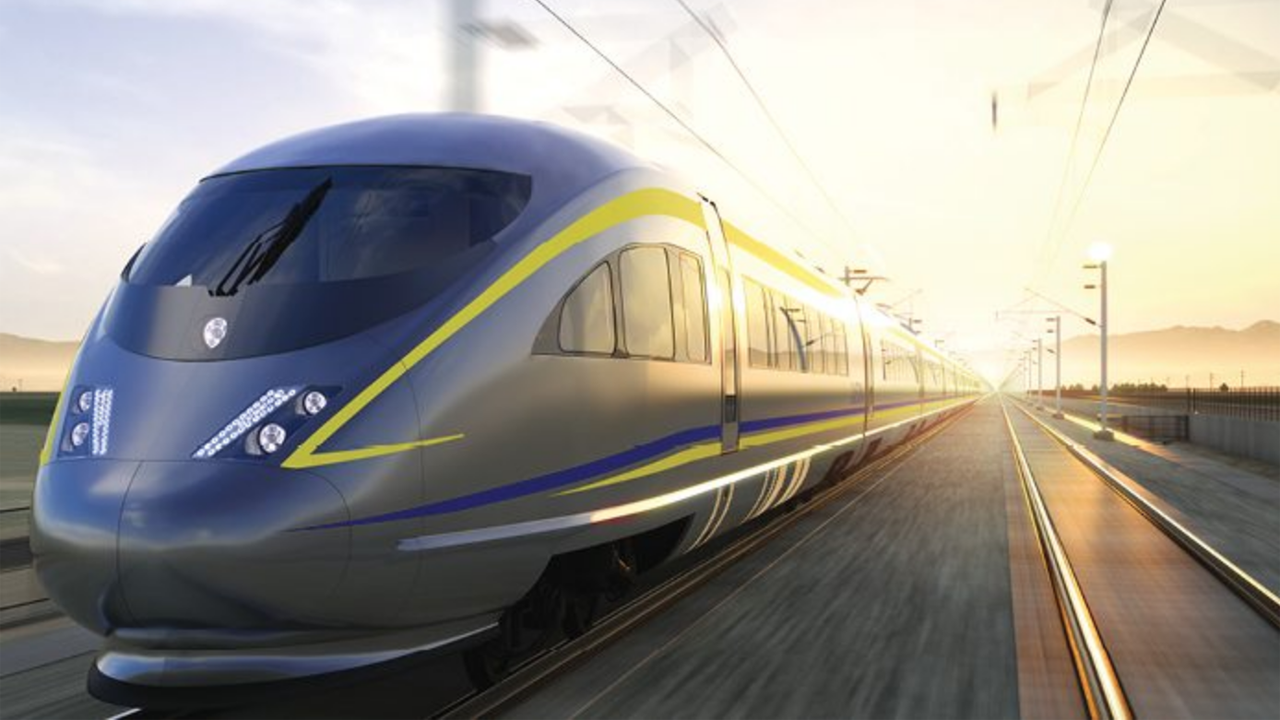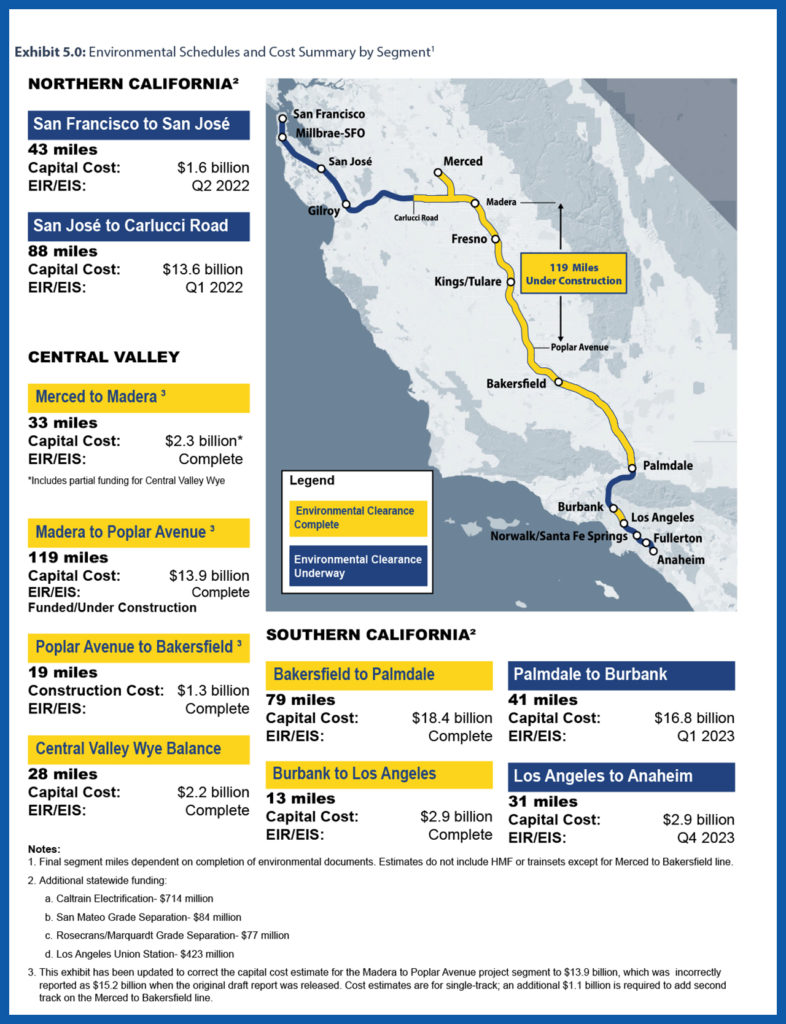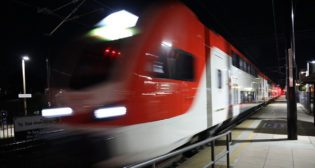
Report: California Delivering $4.2B to High Speed Rail
Written by Marybeth Luczak, Executive Editor
California’s new $307.9 billion budget includes the release of $4.2 billion in Proposition 1A funds to the California High-Speed Rail Authority, “prioritizing $2 billion for the construction of the Merced-to-Bakersfield segment, with a new independent Office of Inspector General providing oversight of the project,” the Los Angeles Times reported on June 30.
The funds will be used to complete the 171-mile Central Valley high speed line between Bakersfield and Merced (see map below).

The California State Senate and Assembly passed the FY 2022-23 budget late June 29 and Gov. Gavin Newsom signed it on June 30. Their agreement “ends a year-plus deadlock in Sacramento on how to spend the last chunk of $4.2 billion in bond funds for high-speed rail, which voters approved in 2008,” according to a report in The Mercury News. “Gov. Gavin Newsom wanted to march forward with laying track in Central Valley farmland and eventually connecting Bakersfield to Merced, but leading Democratic lawmakers blasted the Central Valley link and sought to reroute transit funds closer to their constituents in urban centers.
“California’s unprecedented $97.5 billion budget surplus allowed the state to do both. The budget nearly solidifies the 171-mile Central Valley link—now projected to see a bullet train around 2030. It also increases state funding for rail plans to $3.65 billion this year, which could potentially send money to financially strapped Bay Area projects such as Caltrain electrification and BART to downtown San Jose. Another $4 billion is planned for transit infrastructure through 2025, although that money has yet to be allocated.”
“California’s political leaders listened to voters and stepped up for the future of high-speed rail,” U.S. High Speed Rail Coalition (USHSRC) Co-Chair and former U.S. Department of Transportation Secretary Ray LaHood said in a June 30 statement. “I am gratified that funding for this critical legacy project will be expanded, creating new job opportunities and leading the way not only for California but for the country.”
“We’re thrilled that California’s political leaders are ratifying the will of the voters by advancing funding for the state’s high-speed rail project,” said Sean Jeans-Gail, Vice President of Government Affairs at Rail Passengers Association, in a June 30 statement. “Now, we’re calling on those same leaders, in partnership with the California High-Speed Rail Authority, to accelerate construction on this corridor. This is not the Notre Dame Cathedral, and it should not be a generational construction effort. …”
According to USHSRC, a recent UC Berkeley-Los Angeles Times poll showed that 56% of California voters continue to back construction of high speed rail, 14 years after voters approved Proposition 1A to launch the project.
In 2008, when voters approved, “they were promised a two-hour and 40-minute ride from Los Angeles to San Francisco, with connections to Sacramento and San Diego at a cost of $45 billion,” The Mercury News reported. “Since then the estimated price tag has more than doubled to $113 billion, and that’s for a pared-down version that does not include the Sacramento and San Diego stops.
“High-speed rail has no funding to build a bullet train beyond the Central Valley section at a cost of $23.8 billion. Even with bond money released in the latest budget and revenue it receives from California’s cap-and-trade program, that segment will likely need more money to push it over the finish line due to drastic cost overruns and inflation.”
In related developments, the California High-Speed Rail Authority earlier this month released for Board approval the Final Environmental Impact Report/Environmental Impact Statement (Final EIR/EIS) for the San Francisco to San Jose project section in Northern California. Also, the Authority on April 28 certified the Final EIR/EIS for the approximately 90-mile San Jose to Merced section in Northern California, approving the project. The move “is a critical milestone that moves the project section closer to being ‘shovel ready’ for when pre-construction and construction funding becomes available,” the Authority said.
For more on high speed rail in the United States, read Railway Age Contributing Editor David Peter Alan’s March 2022 feature, “Moving Forward—At Restricted Speed.”



